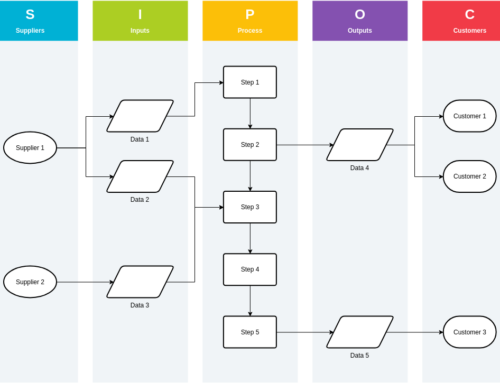Operational Excellence, Continuous Improvement, Business Process Excellence, Lean; call it what you wish. The end goal is to improve the bottom-line results that businesses of various industries can achieve. This post is dedicated to celebrating some of the successes that OpEx leaders and/or companies have had with their improvement efforts – sure to inspire you and your team on the lean journey.
What impact can lean six sigma have on your organization?
Lean Six Sigma has a range of significant impacts on organizations. First, it enhances quality by pinpointing and eliminating process defects, leading to improved customer satisfaction and loyalty. Second, it increases efficiency through waste reduction, resulting in shorter cycle times and enhanced process productivity. Furthermore, it drives cost reduction by optimizing resource usage and eliminating unnecessary expenses, contributing to higher profitability.
Data-driven decision-making is emphasized, fostering better decision-making, and innovation is encouraged, potentially leading to competitive advantages. Lean Six Sigma also instigates cultural transformation, promoting a culture of continuous improvement and risk mitigation by addressing process weaknesses.
Collaboration with suppliers can optimize the supply chain, reducing lead times and costs. Additionally, Lean Six Sigma provides a structured framework for measuring improvement efforts and can align with sustainability goals by reducing waste and enhancing operational efficiency.
Lean Six Sigma positively impacts organizations by improving quality, increasing efficiency, reducing costs, enhancing productivity, and fostering a culture of continuous improvement. It facilitates data-driven decision-making, encourages innovation, and mitigates risks. The incorporation and execution of Lean-driven tools and principles could significantly increase bottom-line profits and drive production in any organization.
Operational Excellence Successes & Stories
From Hurricana Katrina to New-found Success
After the Katrina disaster five years ago, a state agency leader in Louisiana used the new records provided as an opportunity to redesign the process for determining health care eligibility for those in need.
Ruth Kennedy, director of Medicaid and Children’s Health Insurance Program eligibility for the Louisiana Department of Health and Hospitals, has sought to reform the eligibility determination process for years.
But when Katrina hit, the system was essentially wiped out. Employees and customers have been evacuated. Records are destroyed. The office must be replaced. “I don’t want to just rebuild,” Kennedy explained. “I want to build an improved system…”
By leveraging Lean Six Sigma as the key to “create a team-based, disciplined approach”, the state of Louisiana managed to make the city government more effective in the aftermath of Katrina. Be sure to read this inspirational story here.
Walmart Saved $30M With One Simple Idea.
CEO Doug McMillon said, at the retailer’s annual shareholders meeting in Bentonville, Arkansas, that Walmart will save at least $30 million this year by swapping out existing stepping stools in its distribution centers with a lighter-weight version. Read more here.
Proactive Manager Delivers Over $1M in 3 Year Implementation Period.
This initiative by Russ Westcott produced a documented net payoff of more than $1 million over the three-year implementation period. In that time, 72 projects were implemented, with ROIs ranging from 5-to-1 to 400-to-1, and launched a new career. Be sure to read up on the rest of the success story here.
Philips Lighting Shows How Six Sigma Can Benefit Your Organization.
Through the application of multiple tools and techniques within the Project Management, Lean, and Six Sigma methodologies within its project initiative, this example shows how Philips Lighting achieved consistent delivery reliability, pulled customer lead-times from 1% to 42%, and replicated these improvements across 50% of the Outdoor NA portfolio.
North American Building Materials Manufacturer Generates $15M In Savings Through Continuous Improvement Program. Find out how Philips Lighting managed to achieve such success by reading the whole story.
Commercial Banking Improved Processes and Cut Back Office Costs by 30%.
This team took insights from the past 5 years to inform their decisions for Continuous Improvement. You can gain inpiration and ignite your own success story by learning from Commercial Banking’s full success story.
Black & Veatch Earns Excellence Award for Oil & Gas, Power & Utilities
This business excellence program started with 20 people and within 10 years had 2000 active participants, resulting in an 8x increase in tangible, validated benefits for the company and partners or over $100M annually on 3B in Revenue (3%). Read more here.
NextEra Energy (NEE) Promotes Six Sigma Certification
In 4 years, over 5,000* NEE employees obtained Lean Six Sigma (LSS) certifications and their Quality projects have generated over $500M in net present value savings for the company (not counting the Yellow Belt “quick win” improvements that are not tracked). Almost 25% of their Senior Leaders are Lean Six Sigma certified*, including the KPI Fire CEO! Read more of this story here.
Johnson Controls Unlocks Record-Breaking Success Through Six Sigma Principles
300 plants, 120,000 employees. 100% of 400 of Full Time Continuous Improvement professionals were trained. 16,501 projects initiated, 99.9% of projects were completed. Read the whole inspiring story here.
GKN Aerospace Embraces Lean Leadership
This piece on OpEx successes wouldn’t be complete without a story by GKN Aerospace. As an expert on Lean transformation, Philip Holt has more than one success story to share. After twelve years at Philips, being based in the Netherlands, he took his present position at GKN Aerospace as Senior Vice President of Operational Excellence. Philip shares how he managed to transform both Philips and GKN by and through his winning methodologies on “Leading with Lean”. Read more here.
European Bank Applies Six Sigma Methodologies
A European investment bank sought to enhance its cash payment procedures with the goal of minimizing errors and delays, ultimately aiming to enhance customer satisfaction.
To achieve this, the bank applied lean Six Sigma methodologies to identify instances of rework and eliminate unnecessary and duplicated tasks, optimizing the flow of activities from its front offices to operations and back offices. Read more, here
Glaxo Smith Kline Incorporates ADP
While evaluating instances of effective execution throughout the company, several noteworthy observations emerged:
In Global Manufacturing and Supply (GMS), the Lean Six Sigma methodology demonstrated its effectiveness by consistently delivering tangible and quantifiable business improvements.
Within the Consumer Healthcare division, the implementation of Project Management practices was noticeably enhancing project execution, ensuring smoother and more successful outcomes.
Across the organization, the Organizational Development (OD) teams were instrumental in fostering higher levels of engagement and effectively driving change initiatives.
However, it became evident that none of these three disciplines, when applied individually, could fully support the execution of GSK’s ambitious strategic goals. For instance, Lean Six Sigma, while proficient in achieving efficiency and cost savings, faced challenges in altering the prevailing mindset solely through training efforts. Conversely, a pure OD approach ran the risk of prioritizing capability enhancement and behavioral changes over concrete business metrics and outcomes.
Remarkably, nowhere within GSK did we find all three disciplines integrated and applied in tandem. Our hypothesis was straightforward: could the unified application of these three disciplines, known as ADP, generate a more significant and holistic impact on our organization’s success? Read the whole story here.
How to Calculate the Impact of Your Lean Six Sigma Efforts?
Calculating the impact of Lean Six Sigma efforts involves assessing the improvements achieved in your business processes. Upon completion of assessment and refinement of your impact, best practices are born and should be reverted to to continually improve the overall strategy of your Lean initiatives. To measure its impact, you can follow these steps:
Define Key Performance Indicators (KPIs): Identify the specific KPIs that are most relevant to your Lean Six Sigma project. These could include metrics such as cycle time, defect rate, cost savings, customer satisfaction, or any other performance indicators that are essential to your organization.
Establish a Baseline: Before you implement Lean Six Sigma improvements, measure the current state of your processes. This baseline data provides a starting point for evaluating the impact of your efforts.
Set Improvement Goals: Determine the specific improvement goals you want to achieve through Lean Six Sigma initiatives. These goals should be specific, measurable, achievable, relevant, and time-bound (SMART).
Implement Lean Six Sigma Projects: Execute the Lean Six Sigma projects and improvements based on the methodology’s principles. This may involve process mapping, root cause analysis, process redesign, and the implementation of statistical tools and techniques.
Monitor Progress: Continuously track the progress of your Lean Six Sigma projects using the selected KPIs. Monitor both the process improvements and any financial impacts. Utilize tools like control charts and dashboards to visualize data.
Measure the Impact: To calculate the impact of Lean Six Sigma efforts, compare the post-improvement data with the baseline data. Calculate the difference in the KPIs to determine how much improvement has been achieved.
Cost Savings: Calculate the actual cost savings achieved through process improvements. This may include reduced labor costs, lower material waste, and decreased rework expenses. Be sure to manage your cost-savings portfolio effectively.
Defect Reduction: Measure the reduction in defects or errors in your processes. This could be expressed as a percentage decrease in defects.
Cycle Time Reduction: Calculate the reduction in cycle times or lead times for your processes. This can lead to increased efficiency and quicker customer response times.
Customer Satisfaction: Use customer feedback surveys or Net Promoter Score (NPS) to gauge improvements in customer satisfaction resulting from Lean Six Sigma efforts.
Calculate ROI (Return on Investment): Determine the return on investment by comparing the cost savings or revenue increases generated by Lean Six Sigma initiatives against the costs incurred to implement these projects.
Share Results: Communicate the results and impact of Lean Six Sigma efforts with stakeholders, teams, and leadership. Visualize the improvements through charts, reports, and presentations.
Sustain and Continuously Improve: As a CI best practice, it should be noted that the improvement journey is an ongoing one. To maintain the best impact, it’s highly recommended to continuously revisit and refine your processes and strategy.
Learn and Adapt: Consistently analyze results to learn from both successes and failures. Then, use these insights to guide future projects and OpEx efforts.
Lean Efforts Tracking = Operational Excellence Successes
In conclusion, calculating the impact of your Lean Six Sigma efforts can lead to greater successes. To achieve true operational excellence, a systematic process is recommended that involves data collection, analysis, stakeholder feedback, the application of best practices for driving Lean results– and documentation. Calculating and assessing the effectiveness of your continuous improvement initiatives is esentially a best practice for guiding future improvement efforts and more success.
If you have a success story to share in this space, please don’t hesitate to send it to us at: gretchen.lubbe@kpifire.com
We’d love to showcase your OpEx, Lean and CI stories to the world at large.



